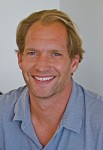Getting Past Veneers

What would it have been like to live in Laguna Beach 100 years ago? The idea of an undeveloped coastal town is idyllic: abundant open space, a pristine Pacific teeming with sea life and a slower pace.
I’m writing this column as I travel to Honduras with two Laguna families, my own included, and Dave Day, the founder of Growers First, a local non-profit that supports rural, poor coffee farmers and sells their roasted beans. We’re going to spend our Thanksgiving week in the mountains with some of the poorest and most generous people you’ll ever meet.
Stunningly, the rural poor of Latin America live in very similar structures and standards as the inhabitants of Laguna Beach did in the early 1900s.
We are fortunate that Laguna drew early 20th century plein air painters who captured that landscapes and modest buildings of the era. My friends Peter and Gail Ochs collect early Impressionist California art and my wife and I were a part of a small group of family and friends that they invited to view the pieces in their home.
Their art still connects the contemporary viewer with familiar beaches, headlands, and city streets. But as I contemplated a few of my favorites in the Ochs’ collection, it struck me how different life was then versus now.
A painting of Victoria Beach totally absorbed me. Part of the attraction was trying to understand how the open headland and reefs connect with what one sees today. It also features three surfers standing on the beach with their solid redwood boards, probably 20 years before Tom Blake started building hollow-framed plywood kook boxes that were 60 pounds lighter.
Of course, we all would like to experience those open spaces and uninhabited beaches of a century ago. But I’m not sure that I’d want to trade my Tom Morey six-foot Heater for uncrowded surf on a plank.
Growers First trips to Honduras, which my family has been involved with for the past eight years, is bit like stepping back into one of those canvases. Part of the attraction is that it allows our boys to spend time with families far outside the economic and consumer bubble that is the United States. We have had the opportunity to break bread, work alongside and experience people who live very differently than families in Laguna Beach.
Viewing a painting of Forest Avenue from 1911, with its eucalyptus trees and single-walled construction and simple wood-framed buildings, made me reflect on the economic and value differences of then and now.
Laguna’s early homesteaders struggled to farm the land. There clearly were no refrigerators or televisions. I doubt most people had telephones. Electricity? In some of William Wendt’s paintings, assuming they were faithful depictions of the time, there is virtually nothing between his studio up around Diamond Street and the coast. No powerlines…and no power.
Which brings me back to Honduras, where 20th-century technology is the rule in many mountain villages: they lack electricity, are reached on dirt roads and families sustain themselves in homes with wood-fire kitchens.
I’m sure we will have a great adventure and also experience that people living at the bottom of the economic pyramid enjoy life despite what looks like hardships to visitors used to 21st century technology.
With Growers First, we work to help people in grinding poverty triple and quintuple their incomes by improving their growing practices and participating more directly in the global supply chain. We also focus on thinking with them about how they can improve health, education and the environment in their communities.
Part of me loves to embrace the art of Laguna from a century ago and its pastoral beauty. The other side of me knows how devastating it is to families when they don’t have more modern amenities, such as antibiotics and modern dentistry. It shouldn’t surprise me, but the talents of those Laguna Beach artists drew me far past the veneer of oil and canvas.
David Vanderveen is a Laguna Beach resident, husband, father and energy drink entrepreneur. His email is [email protected].




